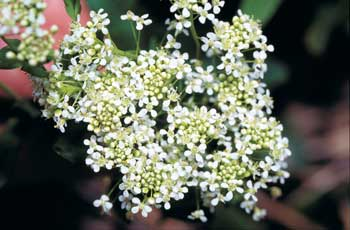The Department of Agriculture and Food reminds wheatbelt farmers to be on the alert for the weed hoary cress.
Department researcher Sandy Lloyd said hoary cress was an insidious plant that could reduce crop yields.
“Hoary cress is a declared plant and a weed of grains, pastures and horticultural crops including orchards and vines,” Ms Lloyd said.
“Its botanical name used to be Cardaria draba, but it is now known as Lepidium draba.”
Ms Lloyd said that hoary cress was a deep rooted perennial. Once established, it was very hard to get rid of.
“The good news for Western Australia is that we don’t currently have much of it, so with vigilance, this is a weed we could eradicate,” she said.
“We need farmers to look for it, especially if they have broadleaf crops such as lupins or canola. It’s in their interest to look for any new or unusual weeds.”
Ms Lloyd said the weed had previously been found in several wheatbelt shires including Gnowangerup, Jerramungup and Kulin.
“Spring is the time to watch out for it, as that is when the plant is in flower,” she said.
“Large numbers of small white flowers are carried in clusters at the tops of its leafy stems, giving it another common name of white top. The upper leaves have no leaf stalk. Each flower is small, about five mm across, and has four petals.”
Hoary cress is an erect herbaceous plant ranging from 150 to 750 mm high. It has branching stems and grey-green leaves covered in soft downy hairs. The hairs give it the whitish or 'hoary' appearance that gives the plant its common name. The leaves are up to 80 mm long, broadly oval in shape and distributed alternately up the stem.
Ms Lloyd said each plant could produce up to 5000 seeds, which could remain viable in the soil for several years. Hoary cress also multiplies and spreads by root fragments produced during soil cultivation.
“This is a weed that generally grows among crops, but it will also grow on roadsides and wasteland. So while our main call for vigilance is to farmers, we also hope the general public will keep a watch out for it,” she said.
Suspected hoary cress should be reported to the department’s Pest and Disease Information Service on freecall 1800 084 881.

Media contacts: Jodie Thomson/Lisa Bertram, media liaison +61 (0)8 9368 3937
